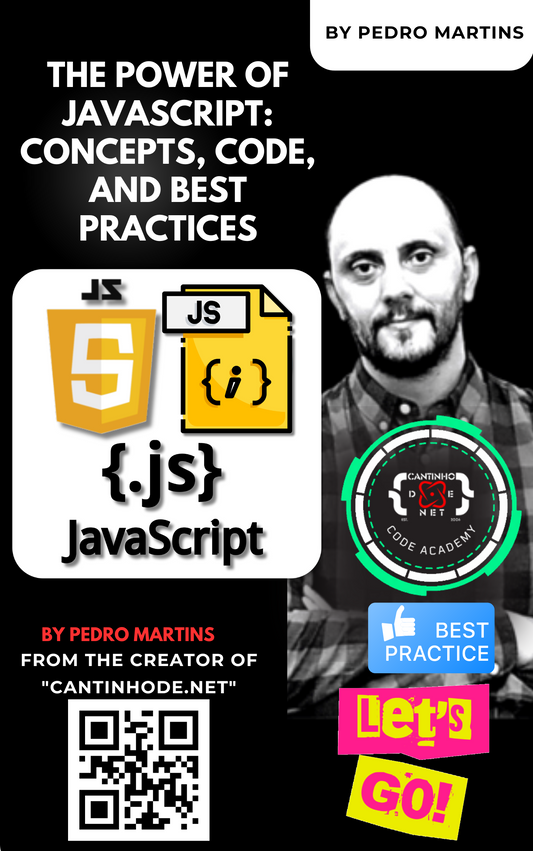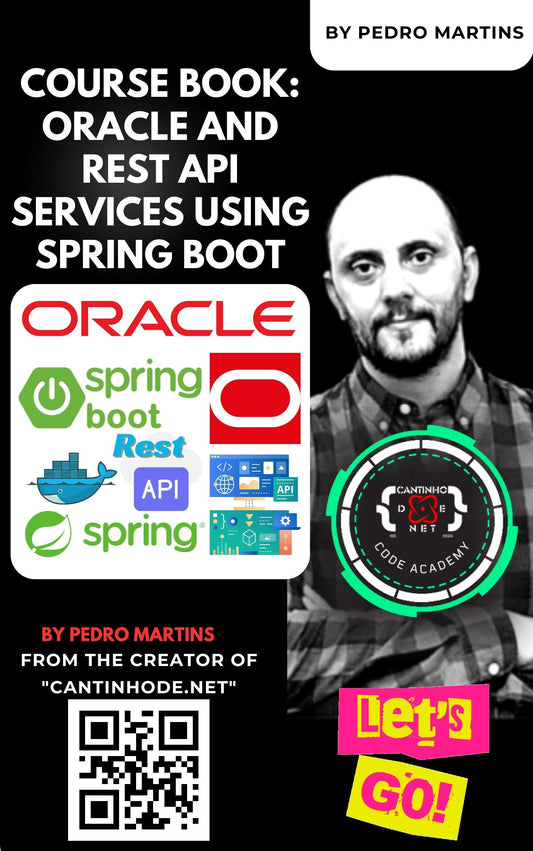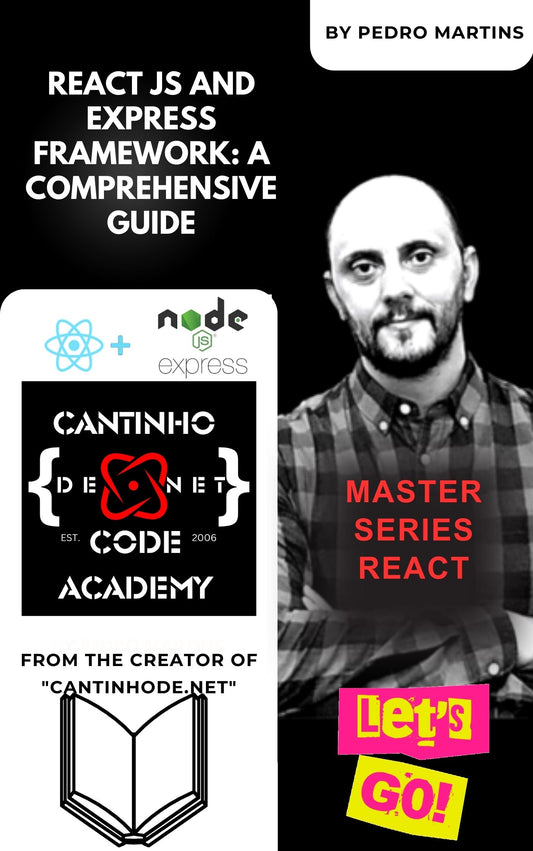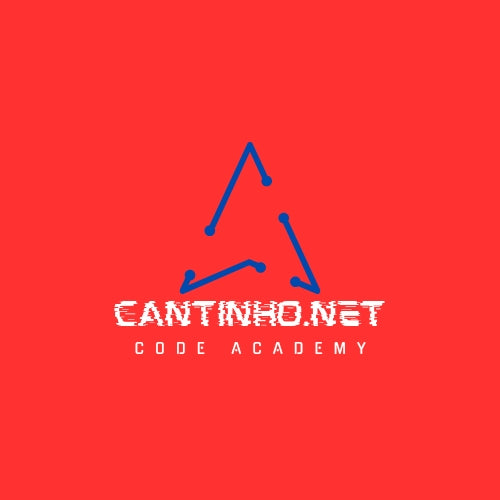Construindo um aplicativo de previsão financeira baseado em IA com ASP.NET, ML.NET e OpenAI
Nos mercados financeiros dinâmicos de hoje, a capacidade de prever tendências de ações pode oferecer uma vantagem significativa para investidores e analistas. Combinando a robustez do ASP.NET com o poder do ML.NET e os modelos de linguagem avançados do OpenAI, você pode criar um aplicativo sofisticado de previsão financeira. Este artigo explica o processo de desenvolvimento de um aplicativo desse tipo, integrando APIs de dados de ações, implementando modelos de aprendizado de máquina e projetando uma interface de usuário intuitiva.
Índice
- Introdução
- Visão geral do projeto
- Pré-requisitos
- Configurando o projeto ASP.NET Core
- Integrando APIs de dados de ações
- Implementando a Previsão Financeira de IA
- Criação de endpoints de API da Web
- Desenvolvendo visualizações de navalha
- Visualizando dados de previsão
- Teste e implantação
- Conclusão
- Recursos adicionais
Introdução
A previsão financeira evoluiu significativamente com o advento da Inteligência Artificial (IA). Ao utilizar aprendizado de máquina e modelos de linguagem avançados, os aplicativos podem analisar vastos conjuntos de dados para prever preços futuros de ações com precisão notável. Este guia demonstra como construir um aplicativo de previsão financeira baseado em IA usando ASP.NET Core, ML.NET para aprendizado de máquina tradicional e os modelos de linguagem da OpenAI para recursos preditivos aprimorados.
Visão geral do projeto
O aplicativo visa fornecer aos usuários previsões financeiras baseadas em IA, com base nos símbolos de ações inseridos. Ele abrange:
- Backend : API Web ASP.NET para manipulação e processamento de dados.
- Frontend : ASP.NET Razor Views para uma interface de usuário interativa.
-
Componentes de IA :
- ML.NET : Para construir e implantar modelos de aprendizado de máquina.
- Modelos OpenAI : para aproveitar o processamento avançado de linguagem para gerar previsões.
A interação entre esses componentes garante um fluxo de dados contínuo, desde a entrada do usuário até as previsões orientadas por IA, culminando em uma experiência do usuário informativa e interativa.
Pré-requisitos
Antes de começar, certifique-se de ter o seguinte:
- Ambiente de desenvolvimento : Visual Studio 2022 ou posterior.
- .NET SDK : .NET 6.0 ou superior.
-
Chaves de API :
- API de dados de ações : Alpha Vantage ou similar.
- OpenAI API : inscreva-se aqui .
-
Base de conhecimento :
- Familiaridade com ASP.NET Core e Razor Pages.
- Compreensão dos princípios da Web API.
- Conceitos básicos de aprendizado de máquina e IA.
Ter um conhecimento sólido dessas áreas facilitará uma experiência de desenvolvimento mais tranquila.
Configurando o projeto ASP.NET Core
Criando um novo projeto ASP.NET Core
- Inicie o Visual Studio e selecione "Criar um novo projeto" .
- Escolha o modelo "ASP.NET Core Web App (Model-View-Controller)" e clique em "Avançar" .
-
Configurar detalhes do projeto :
- Nome do projeto : `StockForecastingApp`.
- Localização : Escolha seu diretório preferido.
- Nome da solução : normalmente o mesmo que o nome do projeto.
- Clique em "Criar" .
- Na caixa de diálogo "Informações adicionais" :
- Estrutura : Selecione .NET 6.0 ou posterior.
- Autenticação : Selecione "Sem autenticação" para simplificar.
- Clique em "Criar" para gerar o projeto.
Compreendendo a estrutura do projeto
A estrutura do projeto inclui:
- Controladores : manipulam solicitações e respostas HTTP.
- Modelos : Define estruturas de dados.
- Visualizações : contém visualizações do Razor para o frontend.
- wwwroot : hospeda arquivos estáticos como JavaScript, CSS e imagens.
Familiarizar-se com essa estrutura é crucial, pois ela forma a base para um desenvolvimento posterior.
Integrando APIs de dados de ações
Para prever os preços das ações com precisão, o aplicativo precisa de acesso a dados históricos e em tempo real.
Obtendo uma chave de API
- Inscreva-se : visite o Alpha Vantage e inscreva-se para obter uma chave de API gratuita.
- Armazenamento seguro : armazene a chave de API com segurança usando variáveis de ambiente ou arquivos de configuração seguros para evitar exposição.
Criando um serviço para buscar dados de ações
Definindo Modelos de Dados
Crie modelos de dados para representar dados de estoque.
// Models/StockData.cs
public class StockData
{
public string Symbol { get; set; }
public List<StockPrice> Prices { get; set; }
}
public class StockPrice
{
public DateTime Date { get; set; }
public decimal Close { get; set; }
}
Implementando o StockService
Desenvolver um serviço para se comunicar com a API do Alpha Vantage.
// Services/StockService.cs
using System.Net.Http;
using System.Text.Json;
using System.Threading.Tasks;
classe pública StockService
{
privado somente leitura HttpClient _httpClient;
string somente leitura privada _apiKey = "YOUR_ALPHA_VANTAGE_API_KEY"; // Substitua pela sua chave de API
Serviço de estoque público (HttpClient httpClient)
{
_httpClient = httpClient;
}
public async Task<StockData> GetStockDataAsync(string símbolo)
{
var url = $"https://www.alphavantage.co/query?function=TIME_SERIES_DAILY&symbol={symbol}&apikey={_apiKey}&outputsize=compact";
var resposta = await _httpClient.GetAsync(url);
resposta.EnsureSuccessStatusCode();
var json = aguardar resposta.Content.ReadAsStringAsync();
usando JsonDocument doc = JsonDocument.Parse(json);
var timeSeries = doc.RootElement.GetProperty("Séries Temporais (Diárias)");
var preços = nova Lista<PreçoAções>();
foreach (propriedade var em timeSeries.EnumerateObject())
{
preços.Adicionar(novo Preço de Ação
{
Data = DateTime.Parse(propriedade.Nome),
Fechar = decimal.Parse(propriedade.Valor.GetProperty("4. fechar").GetString())
});
}
retornar novos StockData
{
Símbolo = símbolo,
Preços = preços.OrderBy(p => p.Data).ToList()
};
}
}
Observação de segurança : substitua "YOUR_ALPHA_VANTAGE_API_KEY" pela sua chave de API. Use métodos seguros para armazenar e acessar chaves de API.
Registrando o StockService com injeção de dependência
Registre o StockService no contêiner de injeção de dependência para permitir seu uso em todo o aplicativo.
// Program.cs or Startup.cs
builder.Services.AddHttpClient<StockService>();
Implementando a Previsão Financeira de IA
A IA aprimora os recursos de previsão do aplicativo por meio de modelos de aprendizado de máquina e processamento avançado de linguagem.
Aprendizado de máquina tradicional com ML.NET
Instalando pacotes ML.NET
Adicione os pacotes ML.NET necessários ao seu projeto:
dotnet add package Microsoft.ML
dotnet add package Microsoft.ML.TimeSeries
Criando o Modelo de Previsão
Desenvolver um serviço que use ML.NET para prever preços futuros de ações.
Definindo Modelos de Predição
// Models/StockPricePrediction.cs
public class StockPricePrediction
{
public DateTime Date { get; set; }
public float PredictedClose { get; set; }
}
Implementando o ForecastService
// Services/ForecastService.cs
using Microsoft.ML;
using Microsoft.ML.Data;
using System;
using System.Collections.Generic;
using System.Linq;
public class ForecastService
{
private readonly MLContext _mlContext;
public ForecastService()
{
_mlContext = new MLContext();
}
public List<StockPricePrediction> Forecast(List<StockPrice> historicalData, int forecastDays = 30)
{
var data = historicalData.Select(p => new StockDataPoint { Date = p.Date, Close = (float)p.Close }).ToList();
var dataView = _mlContext.Data.LoadFromEnumerable(dados);
var forecastingPipeline = _mlContext.Forecasting.ForecastBySsa(
outputColumnName: "FechamentoPrevisto",
inputColumnName: "Fechar",
Tamanho da janela: 30,
comprimento da série: 100,
trainSize: data.Count,
horizonte: previsãoDias,
Nível de confiança: 0,95f,
confidenceLowerBoundColumn: "Fechamento do Limite Inferior",
confidenceUpperBoundColumn: "Fechamento do Limite Superior"
);
var modelo = forecastingPipeline.Fit(dataView);
var forecastEngine = modelo.CreateTimeSeriesEngine<StockDataPoint, StockForecast>(_mlContext);
var previsão = forecastEngine.Predict();
var previsões = nova Lista<PrevisãoDePreçoDeAções>();
Data/hora lastDate = historicalData.Last().Date;
para (int i = 0; i < previsão.ForecastedClose.Length; i++)
{
previsões.Adicionar(nova Previsão de Preço de Ações
{
Data = lastDate.AddDays(i + 1),
PredictedClose = previsão.PrevistoFechar[i]
});
}
previsões de retorno;
}
}
classe pública StockDataPoint
{
data e hora públicas Data {obter; definir;}
público float Fechar { obter; definir; }
}
classe pública StockForecast
{
público float[] ForecastedClose { obter; definir; }
público float[] LowerBoundClose { obter; definir; }
público float[] UpperBoundClose { obter; definir; }
}
Explicação do parâmetro :
- windowSize : determina o número de pontos de dados anteriores usados para fazer uma previsão.
- seriesLength : Comprimento da série temporal de entrada.
- trainSize : Número de pontos de dados usados para treinar o modelo.
- horizonte : Número de pontos futuros a serem previstos.
- confidenceLevel : Probabilidade de que a previsão esteja dentro do intervalo de previsão.
Registrando o ForecastService
Adicione o ForecastService ao contêiner de injeção de dependência.
// Program.cs or Startup.cs
construtor.Services.AddSingleton<ForecastService>();
Aproveitando os modelos OpenAI
Os modelos de linguagem avançados da OpenAI, como o GPT-4, podem ser aproveitados para aprimorar a previsão financeira ao interpretar padrões de dados complexos, gerar análises criteriosas e até mesmo prever tendências com base em grandes quantidades de informações.
Obtendo uma chave de API OpenAI
- Inscreva-se : visite a API OpenAI e crie uma conta.
- Gerar chave de API : crie uma nova chave de API para seu aplicativo.
- Armazenamento seguro : armazene a chave de API com segurança usando variáveis de ambiente ou arquivos de configuração seguros.
Instalando os pacotes necessários
Use o pacote OpenAI-API-dotnet para interagir com a API do OpenAI:
dotnet add package OpenAI-API
Criando o OpenAIService
Desenvolver um serviço para lidar com interações com a API da OpenAI.
// Services/OpenAIService.cs
using OpenAI_API;
usando OpenAI_API.Completions;
usando System.Collections.Generic;
usando System.Threading.Tasks;
classe pública OpenAIService
{
OpenAIAPI _api privada somente leitura;
público OpenAIService(string apiKey)
{
_api = novo OpenAIAPI(apiKey);
}
tarefa pública assíncrona <string> GetForecastAsync (string símbolo, Lista <PreçoDaAção> DadosHistóricos, int ForecastDays = 30)
{
// Preparar o prompt com dados históricos
string prompt = GeneratePrompt(símbolo, dados históricos, previsãoDias);
var completionRequest = novo CompletionRequest
{
Prompt = prompt,
Modelo = OpenAI_API.Models.Model.DavinciText, // Escolha o modelo apropriado
Tokens Máximos = 150,
Temperatura = 0,5,
TopP = 1,0,
Penalidade de frequência = 0,0,
Penalidade de Presença = 0,0,
StopSequences = nova Lista<string> { "\n" }
};
var resultado = await _api.Completions.CreateCompletionAsync(completionRequest);
retornar resultado.Completions[0].Text.Trim();
}
string privada GeneratePrompt(string símbolo, Lista<PreçoDaAção> DadosHistóricos, int ForecastDays)
{
// Construir um prompt detalhado para OpenAI
var prompt = $"Você é um analista financeiro. Com base nos seguintes preços históricos de fechamento para {symbol}, forneça uma previsão para os próximos {forecastDays} dias.\n\n";
foreach (preço variável em dados históricos)
{
prompt += $"{price.Date.ToString("aaaa-MM-dd")}: {price.Close}\n";
}
prompt += "\nPrevisão:\n";
prompt de retorno;
}
}
Registrando o OpenAIService
Adicione o OpenAIService ao contêiner de injeção de dependência, garantindo que a chave da API seja passada com segurança.
// Program.cs or Startup.cs
builder.Services.AddSingleton<OpenAIService>(provider =>
{
var configuration = provider.GetRequiredService<IConfiguration>();
var apiKey = configuration["OpenAI:ApiKey"]; // Certifique-se de que isso esteja definido em sua configuração
retornar novo OpenAIService(apiKey);
});
Configuração :
// appsettings.json
{
"OpenAI": {
"ApiKey": "YOUR_OPENAI_API_KEY"
},
// ... other settings
}
Nota de segurança : Evite codificar chaves de API. Use métodos seguros, como variáveis de ambiente ou gerenciadores de segredos, para armazenar informações confidenciais.
Implementando o OpenAIForecastService
// Services/OpenAIForecastService.cs
using System.Collections.Generic;
using System.Threading.Tasks;
public class OpenAIForecastService
{
private readonly OpenAIService _openAIService;
public OpenAIForecastService(OpenAIService openAIService)
{
_openAIService = openAIService;
}
public async Task<string> GetForecastAsync(string symbol, List<StockPrice> historicalData, int forecastDays = 30)
{
retornar aguardar _openAIService.GetForecastAsync(símbolo, dados históricos, previsãoDias);
}
}
Registrando o OpenAIForecastService
Adicione o OpenAIForecastService ao contêiner de injeção de dependência.
// Program.cs or Startup.cs
builder.Services.AddSingleton<OpenAIForecastService>();
Escolhendo entre modelos ML.NET e OpenAI
Tanto o ML.NET quanto o OpenAI oferecem vantagens exclusivas:
-
ML.NET :
- Prós : Adaptado para dados numéricos estruturados, menor latência, sem dependências externas pós-treinamento.
- Contras : Requer engenharia de recursos manual, limitado no tratamento de dados não estruturados.
-
Modelos OpenAI :
- Prós : Capaz de entender padrões complexos, pode incorporar dados não estruturados, não precisa de treinamento manual.
- Contras : Dependente de chamadas de API externas, custos potenciais, controle limitado sobre o comportamento do modelo.
Recomendação : use o ML.NET para previsões numéricas precisas e o OpenAI para gerar insights analíticos detalhados ou lidar com cenários de previsão mais detalhados.
Criação de endpoints de API da Web
As APIs da Web fazem a ponte entre o front-end e o back-end, gerenciando solicitações e entregando respostas.
Desenvolvendo o ForecastController
Crie um controlador que exponha endpoints para previsões do ML.NET e do OpenAI.
// Controllers/ForecastController.cs using Microsoft.AspNetCore.Mvc; using System.Threading.Tasks; [ApiController] [Route("api/[controller]")] public class ForecastController : ControllerBase { private readonly StockService _stockService; private readonly ForecastService _forecastService; private readonly OpenAIForecastService _openAIForecastService; public ForecastController(StockService stockService, ForecastService forecastService, OpenAIForecastService openAIForecastService) { _stockService = stockService; _forecastService = forecastService;_openAIForecastService = abrirAIForecastService; } [HttpGet("{símbolo}/mlnet")] tarefa pública assíncronaGetMLNetForecast(string símbolo, int dias = 30) { var stockData = await _stockService.GetStockDataAsync(símbolo); var previsões = _forecastService.Forecast(stockData.Prices, dias); retornar Ok(novo { Símbolo = símbolo, ForecastMethod = "ML.NET", Previsões = previsões }); } [HttpGet("{símbolo}/openai")] tarefa pública assíncrona GetOpenAIForecast(string símbolo, int dias = 30) { var stockData = await _stockService.GetStockDataAsync(símbolo); var forecastText = await _openAIForecastService.GetForecastAsync(símbolo, stockData.Preços, dias); retornar Ok(novo { Símbolo = símbolo, ForecastMethod = "OpenAI", Forecast = forecastText }); } }
Detalhes do ponto final :
-
Previsão do ML.NET :
-
Rota :
api/forecast/{symbol}/mlnet -
Parâmetros :
symbol(símbolo de ação),days(opcional, padrão 30) - Resposta : Retorna o símbolo, o método de previsão e os preços de fechamento previstos.
-
Rota :
-
Previsão OpenAI :
-
Rota :
api/forecast/{symbol}/openai -
Parâmetros :
symbol(símbolo de ação),days(opcional, padrão 30) - Resposta : Retorna o símbolo, o método de previsão e a previsão textual.
-
Rota :
Habilitando o Compartilhamento de Recursos entre Origens (CORS)
Se o seu frontend estiver hospedado em um domínio ou porta diferente, configure o CORS para permitir solicitações de origem cruzada.
// Program.cs or Startup.cs
builder.Services.AddCors(options =>
{
options.AddPolicy("AllowAll",
builder => builder.AllowAnyOrigin()
.AllowAnyMethod()
.AllowAnyHeader());
});
app.UseCors("AllowAll");
Consideração de segurança : embora permitir todas as origens seja adequado para desenvolvimento, restrinja as origens na produção para aumentar a segurança.
Desenvolvendo visualizações de navalha
O Razor Views permite a criação de interfaces frontend dinâmicas e interativas.
Projetando a página inicial
Crie uma visualização Razor que permita aos usuários inserir símbolos de ações e visualizar previsões do ML.NET e do OpenAI.
@page
@model IndexModel
@{
ViewData["Title"] = "Stock Forecast";
}
Previsão de ações de IA
@if (Model.MLNetPredictions != null || !string.IsNullOrEmpty(Model.OpenAIForecast))
{
Resultados da previsão para @Model.Symbol
@if (Model.MLNetPredictions != null)
{Previsão ML.NET
}
@if (!string.IsNullOrEmpty(Model.OpenAIForecast))
{
Previsão OpenAI
}
}
@if (!string.IsNullOrEmpty(Model.ErrorMessage))
{
}
@section Scripts {
@if (Model.MLNetPredictions != null)
{
}
@if (!string.IsNullOrEmpty(Model.OpenAIForecast))
{
// Additional scripts for OpenAI-generated content can be added here if needed
}
}
Criando o modelo de página
Implemente a lógica de backend para lidar com envios de formulários e buscar previsões do ML.NET e do OpenAI.
// Pages/Index.cshtml.cs
using Microsoft.AspNetCore.Mvc;
using Microsoft.AspNetCore.Mvc.RazorPages;
using System.Collections.Generic;
using System.Net.Http;
using System.Threading.Tasks;
using Newtonsoft.Json;
public class IndexModel : PageModel
{
private readonly IHttpClientFactory _httpClientFactory;
[BindProperty]
public string Symbol { get; set; }
public string ErrorMessage { get; set; }
Lista pública<PrevisãoDePreçoDeAções> MLNetPredictions { obter; definir; }
string pública OpenAIForecast { obter; definir; }
string pública ForecastSymbol { obter; definir; }
IndexModel público (IHttpClientFactory httpClientFactory)
{
_httpClientFactory = httpClientFactory;
}
tarefa pública assíncrona <IActionResult> OnPostAsync()
{
se (string.IsNullOrEmpty(Símbolo))
{
ErrorMessage = "Por favor, insira um símbolo de ação.";
retornar Página();
}
var cliente = _httpClientFactory.CreateClient();
// Obter previsão do ML.NET
var mlnetApiUrl = $"api/forecast/{Symbol}/mlnet?days=30";
var mlnetResponse = await client.GetAsync(mlnetApiUrl);
se (mlnetResponse.IsSuccessStatusCode)
{
var mlnetJsonString = aguarda mlnetResponse.Content.ReadAsStringAsync();
var mlnetForecastResult = JsonConvert.DeserializeObject<MLNetForecastResult>(mlnetJsonString);
MLNetPredictions = mlnetForecastResult.Predictions;
ForecastSymbol = mlnetForecastResult.Symbol;
}
outro
{
ErrorMessage += "Falha ao recuperar dados de previsão do ML.NET.";
}
// Obter previsão do OpenAI
var openaiApiUrl = $"api/forecast/{Symbol}/openai?days=30";
var openaiResponse = aguardar cliente.GetAsync(openaiApiUrl);
if (openaiResponse.IsSuccessStatusCode)
{
var openaiJsonString = await openaiResponse.Content.ReadAsStringAsync();
var openaiForecastResult = JsonConvert.DeserializeObject<OpenAIForecastResult>(openaiJsonString);
OpenAIForecast = openaiForecastResult.Forecast;
ForecastSymbol = openaiForecastResult.Symbol;
}
outro
{
ErrorMessage += "Falha ao recuperar dados de previsão do OpenAI.";
}
retornar Página();
}
classe pública MLNetForecastResult
{
string pública Símbolo { obter; definir; }
string pública ForecastMethod { obter; definir; }
Lista pública <StockPricePrediction> Previsões { obter; definir; }
}
classe pública OpenAIForecastResult
{
string pública Símbolo { obter; definir; }
string pública ForecastMethod { obter; definir; }
string pública Previsão { obter; definir; }
}
}
Pontos principais :
- Manipulação de formulários : captura a entrada do símbolo de ações feita pelo usuário.
- Chamadas de API : busca previsões de endpoints ML.NET e OpenAI.
- Agregação de erros : acumula mensagens de erro se alguma das chamadas de API falhar.
- Vinculação de dados : preenche a exibição com dados de previsão após recuperação bem-sucedida.
Visualizando dados de previsão
A visualização eficaz ajuda os usuários a interpretar dados previstos facilmente.
Integrando Chart.js para ML.NET Forecast
Chart.js é usado para renderizar a previsão gerada pelo ML.NET em um gráfico de linhas.
@section Scripts {
@if (Model.MLNetPredictions != null)
{
}
@if (!string.IsNullOrEmpty(Model.OpenAIForecast))
{
// Scripts adicionais para conteúdo gerado pelo OpenAI podem ser adicionados aqui, se necessário
}
}
Características :
-
Vinculação dinâmica de dados : a variável
mlnetPredictionsé preenchida com dados JSON do servidor. - Configuração do gráfico : configura um gráfico de linhas responsivo com eixo x baseado em tempo.
Exibindo a previsão do OpenAI
A previsão do OpenAI é exibida como uma análise textual dentro de uma caixa de alerta.
@if (!string.IsNullOrEmpty(Model.OpenAIForecast))
{
Previsão OpenAI
}
Melhorias :
- Estilo : use CSS para melhorar a legibilidade e a estética.
- Interatividade : permita que os usuários expandam ou recolham o texto da previsão para uma melhor experiência do usuário.
Teste e implantação
Garantir que seu aplicativo funcione perfeitamente em diferentes cenários é crucial.
Executando o aplicativo localmente
-
Iniciar o aplicativo : pressione
F5no Visual Studio para iniciar o aplicativo. -
Acesse a página inicial : navegue até
https://localhost:5001ou o URL especificado. -
Insira o símbolo de ação : insira um símbolo de ação válido (por exemplo,
AAPL) e envie o formulário. - Revisar previsões : visualize previsões geradas pelo ML.NET e pelo OpenAI.
Lidando com casos extremos e erros
Implemente um tratamento de erros robusto para gerenciar problemas potenciais:
- Símbolos inválidos : notifique os usuários se o símbolo de ação inserido for inválido ou não encontrado.
- Limites de taxa de API : monitore e manipule respostas de limitação de taxa de API com elegância.
- Problemas de rede : informe os usuários sobre problemas de conectividade que afetam a recuperação de dados.
- Validação de dados : garanta que os dados de entrada estejam de acordo com os formatos e intervalos esperados.
- Manipulação de Respostas OpenAI : Valide e higienize respostas para evitar injeção de conteúdo malicioso.
Implementando Mecanismos de Cache
Para otimizar o desempenho e reduzir chamadas de API:
- Respostas em cache : armazene previsões recentes e reutilize-as para solicitações idênticas dentro de um período de tempo especificado.
- Invalidar cache : estabeleça regras para atualizar os dados em cache periodicamente para manter a precisão.
A implementação do cache melhora a capacidade de resposta e a eficiência do aplicativo.
Implantando o aplicativo
Escolha uma plataforma de hospedagem para tornar seu aplicativo acessível:
- Azure App Service : integração perfeita com aplicativos ASP.NET Core.
- Amazon Web Services (AWS) : Soluções de hospedagem flexíveis com serviços como o Elastic Beanstalk.
- Serviços de Informações da Internet (IIS) : adequado para implantações de servidores locais ou dedicados.
Etapas de implantação :
- Publicar o aplicativo : use as ferramentas de publicação do Visual Studio para criar e preparar o aplicativo.
- Configurar variáveis de ambiente : gerencie com segurança chaves de API e outras configurações confidenciais no ambiente de produção.
- Habilitar HTTPS : garanta a transmissão segura de dados aplicando HTTPS.
- Monitorar e dimensionar : utilize ferramentas de monitoramento para rastrear o desempenho do aplicativo e dimensionar recursos conforme necessário.
- Implementar CI/CD : configurar pipelines de integração contínua/implantação contínua para atualizações simplificadas.
Conclusão
A combinação do ASP.NET Core com modelos ML.NET e OpenAI permite a criação de um aplicativo de previsão financeira poderoso. Ao integrar APIs de dados de ações, implementar modelos de IA tradicionais e avançados e projetar uma interface de usuário intuitiva, você pode fornecer aos usuários previsões abrangentes e perspicazes.
À medida que os mercados financeiros evoluem, considere aprimorar seu aplicativo com recursos como autenticação de usuário, visualização de dados históricos, modelos avançados de IA, atualizações em tempo real e design responsivo para atender à crescente demanda dos usuários. Testes contínuos, otimização e feedback dos usuários aprimorarão ainda mais o aplicativo, garantindo que ele continue sendo uma ferramenta valiosa no mundo dinâmico dos mercados de ações.







